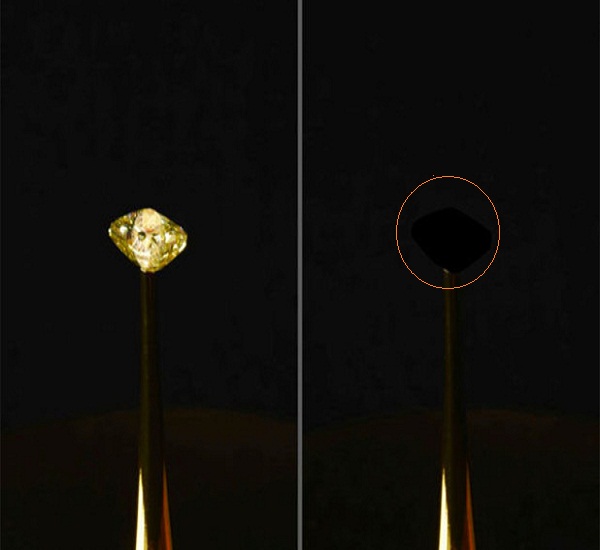A high-tech material has been dubbed the “blackest black” ever created.
The unnamed substance traps over 99.9% of light, making it 10 times blacker than anything that’s come before it.
Scientists at the Massachusetts Institute of Technology made it from nanotubes – tiny bits of carbon 50,000 times smaller than the width of a human hair.
They say the material could be used in artwork or to help space telescopes spot distant galaxies by filtering out stray light that blocks the lens.
“There are optical and space science applications for very black materials,” said professor Brian Wardle, lead author of a new study on the find.
“And of course, artists have been interested in black, going back well before the Renaissance.”
To test the nano-coating, the scientists layered it over a 16-carat diamond worth £1.6million (about $2 million) as part of a New York art exhibit.
Images revealed the gem, normally a bright yellow, completely disappeared into a flat, black void once the coating was added.
The material was made by “growing” nanotubes on aluminum foil using a complex set of chemical processes.
Further tests showed it absorbed greater than 99.995% of incoming light, from every angle.
That means it’s even darker than vantablack, long believed to be the blackest material on Earth.
“Our material is 10 times blacker than anything that’s ever been reported,” Wardle said.
He added that he expects scientists to dream up an even blacker substance in the future.
“I think the blackest black is a constantly moving target.
“Someone will find a blacker material and eventually we’ll understand all the underlying mechanisms and will be able to properly engineer the ultimate black.”
Source: Nypost









